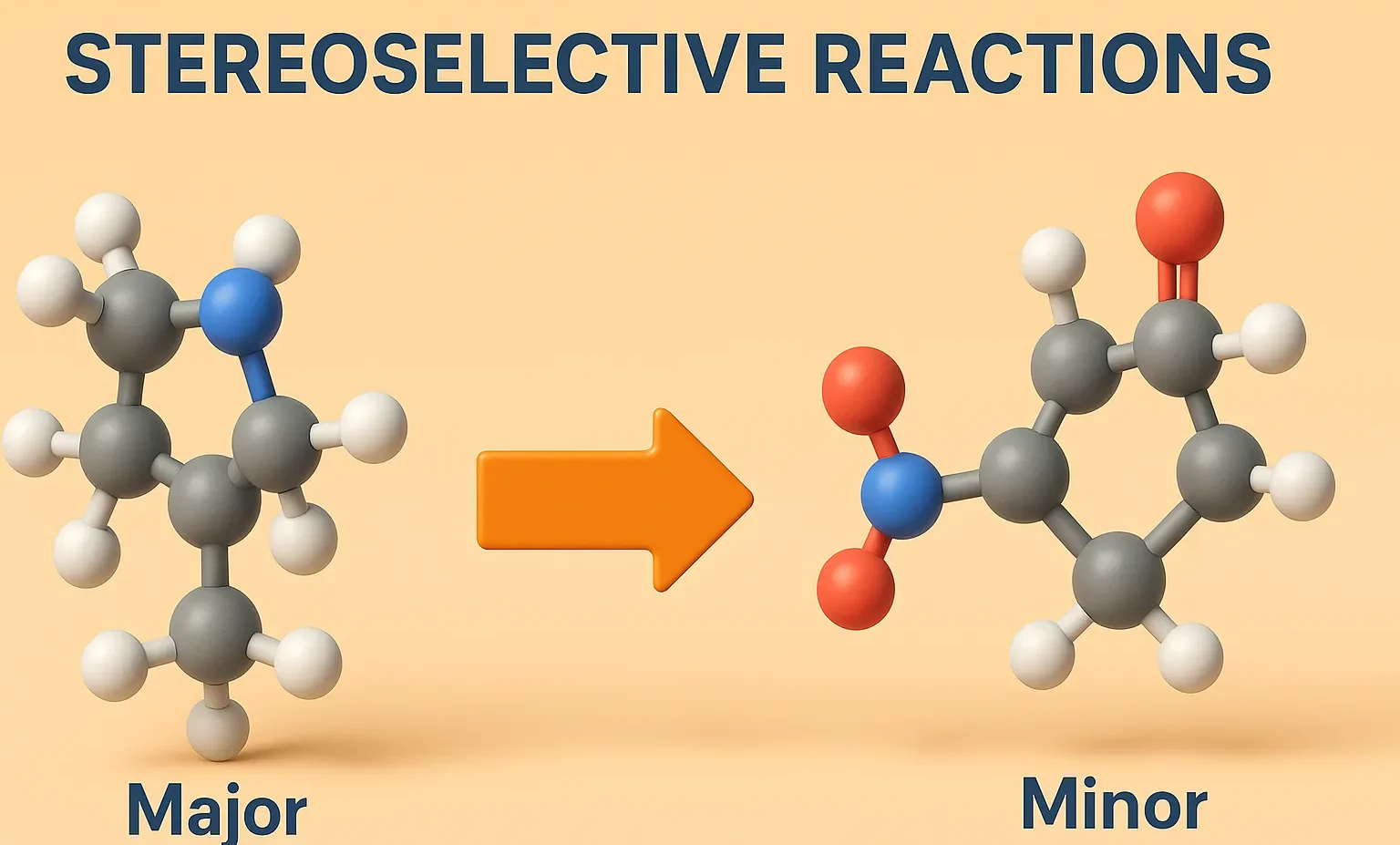Stereoselective Reactions are reactions where one stereoisomer is formed preferentially over others from the same reactant.
Definition of Stereoselective Reactions:
- A stereoselective reaction is a chemical reaction in which a single reactant can produce two or more stereoisomeric products, but one is formed preferentially over the others.
- The preference arises due to factors like steric hindrance, electronic effects, or transition state stability.
- The reaction does not require the reactant to be stereoisomeric.
Advertisements
Types of Stereoselectivity:
- Enantioselective Reaction: Preferential formation of one enantiomer over the other.
- Diastereoselective Reaction: Preferential formation of one diastereomer over another.
Key Characteristics:
- Selectivity comes from how the reaction pathway favors one stereoisomer.
- Multiple stereoisomers are possible, but the reaction yields one as the major product.
Advertisements
Examples of Stereoselective Reactions:
-
Hydroboration–Oxidation of Alkenes
- Adds H and OH from the same face of the double bond (syn addition).
- Results in a specific stereoisomer of an alcohol.
- Stereoselective, but not stereospecific (could apply to achiral alkenes).
-
Catalytic Hydrogenation of Alkenes
- H₂ adds syn (from the same face).
- In cyclic alkenes, this often results in cis-products.
- The face of attack is controlled by steric accessibility.
Click Here to Watch the Best Pharma Videos
Advertisements

